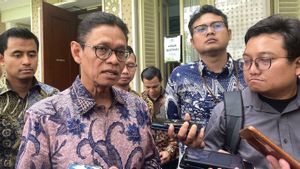SEOUL - The first heatwave warning this year was issued for South Korea's central and inland regions (South Korea), and the government raised levels of national heat wave warning to strengthen monitoring and countermeasures.
The first heatwave warning this season was in place for seven regions, including the cities of Icheon and Yeoju in Gyeonggi Province, Chuncheon in Gangwon Province, and several areas in the central part such as Buyeo and Uiseong, according to the Korean Meteorological Administration (KMA).
Warning of heat waves is issued when the highest temperature felt is estimated at 35 degrees Celsius or higher.
The weather agency also issued recommendations regarding hot temperatures for most other regions nationwide, including Seoul.
When combined, around 71 percent, or 128 of the 180 regions across the country have an alert status.
Advice about heat waves is released when the highest temperatures felt are estimated to reach 33 degrees Celsius or higher for two days or more in a row.
The warning is also issued when significant damage is expected to occur due to the sudden increase in the temperature or prolonged heat wave conditions.
As heat waves are expected to continue until Monday, the government raised the level of the one-level heatwave crisis to the third-highest "alert" level based on the national four-level warning system at 11.30 local time, calling for more decisive measures to protect the public, infrastructure and industry.
另请阅读:
The warning system has four levels: attention, alert, alert, and serious.
The Ministry of Home Affairs has asked several relevant ministries and local governments to comprehensively take steps to protect the elderly, homeless, construction workers, and other vulnerable people.
A number of efforts also need to be made to prevent damage to the agricultural and fishery industry and to ensure the safety of railway lines and other infrastructure.
In 2022, the season's first third-highest crisis level will also be released one day early on July 2.
The English, Chinese, Japanese, Arabic, and French versions are automatically generated by the AI. So there may still be inaccuracies in translating, please always see Indonesian as our main language. (system supported by DigitalSiber.id)

















